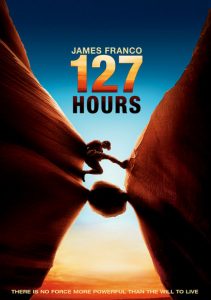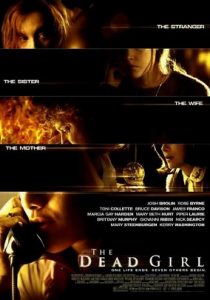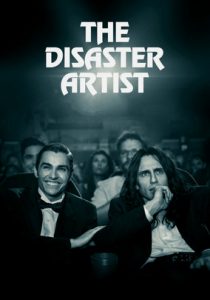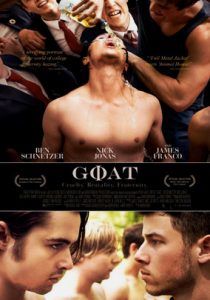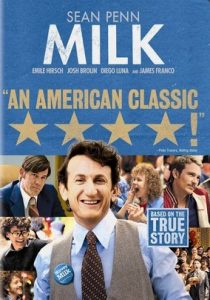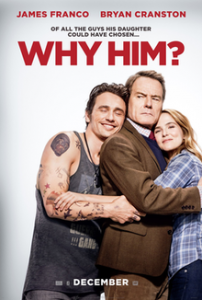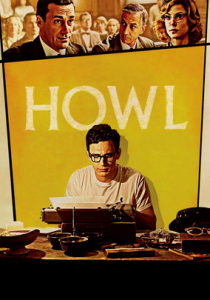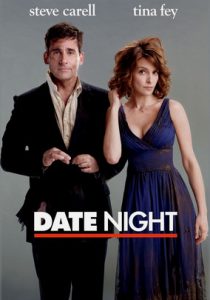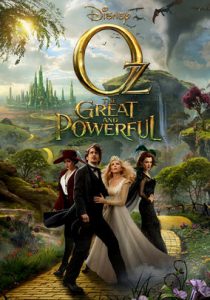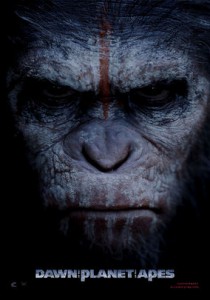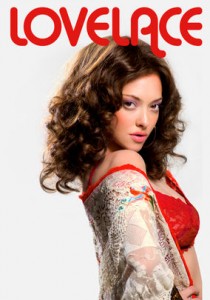127 Hours-2010
Director Danny Boyle
Starring James Franco, Kate Mara
Scott’s Review #967
Reviewed December 13, 2019
Grade: A
A biography of epic proportions, 127 Hours (2010) provides a stunning account of one man’s journey and near-tragic fate. If not for his resolve and determination this would surely have been the result.
Director, Danny Boyle casts the charismatic James Franco in the role of the hiker who was forced to amputate his arm after becoming pinned by a rock. The effective title gives a non-stop active feel, a five-day in-life production if you will, and a pulsating ninety minutes of crafty filmmaking.
The film starts a cheery story of an excited mountaineer, Aron Ralston, (Franco) who prepares to embark on a long-awaited adventure.
The time is April 2003.
His goal is to enjoy a few days of hiking, reveling in the freedom the fresh Utah air offers him. Somewhat of a daredevil, he happily anticipates adventure as he begins his journey.
He meets two attractive young women, Kristi (Kate Mara) and Megan (Amber Tamblyn) and the trio swims in an underground pool before going their separate ways.
Had 127 Hours been a horror film there would be a sense of suspicion or dread surrounding the female hikers, but the scene is enchanting and pure innocence.
Once again on his own, Aron suddenly slips and falls, knocking over a boulder that crushes his right hand and wrist against the wall. He calls for help but realizes that he is alone. Aron begins recording a video diary and reflects on his past, for example forgetting to leave a note of his whereabouts while becoming more and more desperate to escape.
Most of 127 Hours is set within a state of claustrophobic peril in the tiny walls of the rocks that Ralston is trapped between. The film quickly becomes an emotional and personal experience as the camera is focused on Franco, mostly in the close-up form.
At times the shots are too close for comfort, but this is a necessary way for the viewer to experience events the way that Aron did, the style is tremendously effective.
At the risk of diminishing the amazing direction, editing, and cinematography offered, the film belongs to Franco.
As Aron faces peril, growing frantic with each passing hour, but trying to remain calm and focused, Franco does a tremendous job of balancing and revealing the proper emotions. He whimsically recounts memories while forbidding himself to lose sight of escape, rationing what little food and water he has.
The gruesome amputation scene is gory and powerful and may necessitate closing one’s eyes.
The remainder of the elements come together perfectly. The editing, cinematography, and pacing of the story are all spot-on. The musical soundtrack is key to the pacing of the film. At first energetic and excitable, the music slowly becomes darker and more subdued, while at the end it is low-key.
Aron is thankful to simply be alive as he walks a lonely walk to help as the film concludes.
Since the real-life figure is still very much alive, the historical accuracy of the experience is preserved, as confirmed by the hero. He only showed Kristi and Megan basic climbing moves and they never swam together, but the remainder is a brilliant documentary-style film experience.
The real Ralston himself, along with his wife and son make cameo appearances at the end of the film, providing good authenticity.
127 Hours (2010) scores big, creating an experience that is breathtaking, disturbing, and real. Inspiration will be given to each viewer and a lesson in endurance and perseverance will resonate in their own life.
The film deservedly received Oscar nominations for Best Picture, Best Actor, Best Adapted Screenplay, Best Original Score, Best Original Song, and Best Film Editing, but sadly coming up empty-handed.
Oscar Nominations: Best Picture, Best Actor-James Franco, Best Adapted Screenplay, Best Original Score, Best Original Song-“If I Rise”, Best Film Editing
Independent Spirit Award Nominations: 1 win-Best Feature, Best Director-Danny Boyle, Best Male Lead-James Franco (won)
